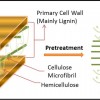 This 4-page fact sheet discusses bioethanol as a renewable form of energy, explaining the importance of using ligno-cellulosic biomass to produce biofuels. It describes the pretreatment step in producing biofuels and the need for more research into this step so that ligno-cellulosic biofuels can be produced cheaply and efficiently at a commercial scale. Written by Zhaohui Tong, Nusheng Cheng, and Pratap Pullammanappallil, and published by the UF Department of Agricultural and Biological Engineering, January 2013.
This 4-page fact sheet discusses bioethanol as a renewable form of energy, explaining the importance of using ligno-cellulosic biomass to produce biofuels. It describes the pretreatment step in producing biofuels and the need for more research into this step so that ligno-cellulosic biofuels can be produced cheaply and efficiently at a commercial scale. Written by Zhaohui Tong, Nusheng Cheng, and Pratap Pullammanappallil, and published by the UF Department of Agricultural and Biological Engineering, January 2013.
http://edis.ifas.ufl.edu/ae495
Category: Agriculture
Tips for Integrating Land and Wildlife Management: Deer in Forests (WEC329/UW374)
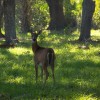 Prized by hunters and wildlife enthusiasts alike, white-tailed deer are a popular species found throughout Florida. As such, they are often the focus of management for landowners, managers, and lessees who want to improve deer populations while maintaining other land uses such as timber production. This 2-page fact sheet provides some deer habitat improvement tips that focus primarily on raising the quality of deer forage but that also will help you grow better cover by improving plant diversity and productivity. Written by William M. Giuliano, John M. Olson, and Cailey Thomas, and published by the UF Department of Wildlife Ecology and Conservation, January 2013.
Prized by hunters and wildlife enthusiasts alike, white-tailed deer are a popular species found throughout Florida. As such, they are often the focus of management for landowners, managers, and lessees who want to improve deer populations while maintaining other land uses such as timber production. This 2-page fact sheet provides some deer habitat improvement tips that focus primarily on raising the quality of deer forage but that also will help you grow better cover by improving plant diversity and productivity. Written by William M. Giuliano, John M. Olson, and Cailey Thomas, and published by the UF Department of Wildlife Ecology and Conservation, January 2013.
http://edis.ifas.ufl.edu/uw374
Tips for Integrating Land and Wildlife Management: Quail and Timber (WEC331/UW376)
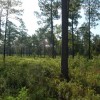 In Florida, changes in forest management practices during the past 50+ years have led to declines in quail habitat and populations. Important changes involve the use of fire and conversion of native forests to commercial pine plantations. A lack of fire and other disturbance has often led to closed-canopy forests with dense undergrowth that lack important quail habitat components. This 2-page fact sheet provides several quail habitat improvement tips that focus on diversifying the plant species and structural composition and increasing early successional communities dominated by herbaceous plants. Written by William M. Giuliano and Lauren Watine, and published by the UF Department of Wildlife Ecology and Conservation, January 2013.
In Florida, changes in forest management practices during the past 50+ years have led to declines in quail habitat and populations. Important changes involve the use of fire and conversion of native forests to commercial pine plantations. A lack of fire and other disturbance has often led to closed-canopy forests with dense undergrowth that lack important quail habitat components. This 2-page fact sheet provides several quail habitat improvement tips that focus on diversifying the plant species and structural composition and increasing early successional communities dominated by herbaceous plants. Written by William M. Giuliano and Lauren Watine, and published by the UF Department of Wildlife Ecology and Conservation, January 2013.
http://edis.ifas.ufl.edu/uw376
Proper Calibration of Soil Fumigant Application Equipment (ENY047/IN404)
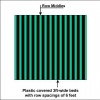 Calibration of soil fumigant equipment and determination of soil fumigant application rate are two of the most important factors contributing to the success or failure of pest control efficacy and crop production response, yet generate some of the greatest confusion among many researchers and growers alike. This 5-page fact sheet was written by J.W. Noling, and published by the UF Department of Entomology and Nematology, December 2012.
Calibration of soil fumigant equipment and determination of soil fumigant application rate are two of the most important factors contributing to the success or failure of pest control efficacy and crop production response, yet generate some of the greatest confusion among many researchers and growers alike. This 5-page fact sheet was written by J.W. Noling, and published by the UF Department of Entomology and Nematology, December 2012.
http://edis.ifas.ufl.edu/in404
Enemigos naturales y control biologico (ENY866/IN977)
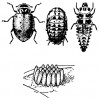 Hay muchos insectos benéficos pero solamente hay algunos que son enemigos naturales de plagas. Los enemigos naturales más comunes de encontrar son: mariquitas/tortolitas, crisopas, antocóridos (Orius), ligaéidos, sírfidos, avispas de agallas, hormigas, avispas parasíticas, moscas parasíticas y ácaros depredadores. La importancia relativa varía de acuerdo con cada insecto plaga, el hábitat y la estación o época del año. This 7-page fact sheet was written by Hugh A. Smith y John L. Capinera, traducido por Ana Lucrecia MacVean, and published by the UF Department of Entomology and Nematology, January 2013.
Hay muchos insectos benéficos pero solamente hay algunos que son enemigos naturales de plagas. Los enemigos naturales más comunes de encontrar son: mariquitas/tortolitas, crisopas, antocóridos (Orius), ligaéidos, sírfidos, avispas de agallas, hormigas, avispas parasíticas, moscas parasíticas y ácaros depredadores. La importancia relativa varía de acuerdo con cada insecto plaga, el hábitat y la estación o época del año. This 7-page fact sheet was written by Hugh A. Smith y John L. Capinera, traducido por Ana Lucrecia MacVean, and published by the UF Department of Entomology and Nematology, January 2013.
http://edis.ifas.ufl.edu/in977
Interpretacion del contenido de la humedad del suelo para determinar capacidad de campo y evitar riego excesivo en suelos arenosos utilizando sensores de humedad (AE496)
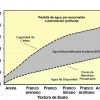 Este documento resume las directrices para la determinación de la capacidad de campo y la programación óptima del riego para suelos arenosos utilizando sensores de medición de la humedad del suelo (SHS). Los sensores de humedad del suelo han demostrado potencial para el monitoreo de la humedad del suelo, y para el respaldo en la toma de decisiones de riego en cultivos hortícolas. This 4-page fact sheet was written by Lincoln Zotarelli, Michael D. Dukes, y Kelly T. Morgan, and published by the UF Department of Agricultural and Biological Engineering, January 2013.
Este documento resume las directrices para la determinación de la capacidad de campo y la programación óptima del riego para suelos arenosos utilizando sensores de medición de la humedad del suelo (SHS). Los sensores de humedad del suelo han demostrado potencial para el monitoreo de la humedad del suelo, y para el respaldo en la toma de decisiones de riego en cultivos hortícolas. This 4-page fact sheet was written by Lincoln Zotarelli, Michael D. Dukes, y Kelly T. Morgan, and published by the UF Department of Agricultural and Biological Engineering, January 2013.
http://edis.ifas.ufl.edu/ae496
Nutrient Cycling in Grazed Pastures (SL376/SS578)
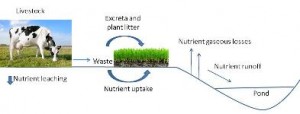 Many forage-based livestock production systems in Florida are characterized by extensive grazing with minimal inputs of commercial fertilizer and supplemental feed. In these systems, adequate soil fertility conditions are essential to sustain forage production. If nutrients become deficient, pasture and animal performance is reduced, and the economic returns of livestock operations may decline. This 3-page fact sheet discusses the different nutrient pathways in grazing pastures to help producers better understand how to promote nutrient cycling and pasture sustainability. Written by Maria L. Silveira, Joao M. B. Vendramini, Hiran M. da Silva, and Mariana Azenha, and published by the UF Department of Soil and Water Science, January 2013.
Many forage-based livestock production systems in Florida are characterized by extensive grazing with minimal inputs of commercial fertilizer and supplemental feed. In these systems, adequate soil fertility conditions are essential to sustain forage production. If nutrients become deficient, pasture and animal performance is reduced, and the economic returns of livestock operations may decline. This 3-page fact sheet discusses the different nutrient pathways in grazing pastures to help producers better understand how to promote nutrient cycling and pasture sustainability. Written by Maria L. Silveira, Joao M. B. Vendramini, Hiran M. da Silva, and Mariana Azenha, and published by the UF Department of Soil and Water Science, January 2013.
http://edis.ifas.ufl.edu/ss578
Reconciling Immigration and Agricultural Labor Concerns for a Sustainable State Economy (WC132)
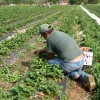 Immigration in Florida is a contested issue, and having an understanding of this issue can help facilitate communication. This 6-page fact sheet provide brief but clear information about the trends in policies that can be used by Extension agents to increase educated conversations around immigration issues. Written by Agricultural Education and Communication, and published by the UF Department of Chandra Bowden, Alexa Lamm, Hannah Carter, Tracy Irani, and Sebastian Galindo, December 2012.
Immigration in Florida is a contested issue, and having an understanding of this issue can help facilitate communication. This 6-page fact sheet provide brief but clear information about the trends in policies that can be used by Extension agents to increase educated conversations around immigration issues. Written by Agricultural Education and Communication, and published by the UF Department of Chandra Bowden, Alexa Lamm, Hannah Carter, Tracy Irani, and Sebastian Galindo, December 2012.
http://edis.ifas.ufl.edu/wc132
Air Potato Leaf Beetle (Suggested Common Name), Lilioceris cheni Gressitt and Kimoto (Insecta: Coleoptera: Chrysomelidae: Criocerinae) (EENY547/IN972)
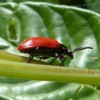 This leaf feeding beetle was recently introduced into Florida from China for biological control of air potato. This 4-page fact sheet provides information on the distribution, appearance, life cycle, host range and importance of the beetle. Written by Entomology and Nematology, and published by the UF Department of Ted D. Center and William A. Overholt, January 2013.
This leaf feeding beetle was recently introduced into Florida from China for biological control of air potato. This 4-page fact sheet provides information on the distribution, appearance, life cycle, host range and importance of the beetle. Written by Entomology and Nematology, and published by the UF Department of Ted D. Center and William A. Overholt, January 2013.
http://edis.ifas.ufl.edu/in972
Construccion de Sistema Hidroponico Flotante (HS1210)
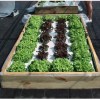 Los aztecas maravillaron a los conquistadores españoles con sus huertos flotantes, y hoy, 500 años después, usted puede impresionar a sus amigos y vecinos con el suyo. This 4-page fact sheet was written by Horticultural Sciences, and published by the UF Department of J. Bosques, M. Sweat, R. Tyson, y R. Hochmuth, January 2013.
Los aztecas maravillaron a los conquistadores españoles con sus huertos flotantes, y hoy, 500 años después, usted puede impresionar a sus amigos y vecinos con el suyo. This 4-page fact sheet was written by Horticultural Sciences, and published by the UF Department of J. Bosques, M. Sweat, R. Tyson, y R. Hochmuth, January 2013.
http://edis.ifas.ufl.edu/hs1210
Tips for Integrating Land and Wildlife Management: Quail in Cattle Country (WEC332/UW377)
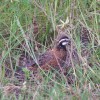 This 2-page fact sheet provides specific tips to improve quail habitat in cattle country that focus on diversifying the plant species and structural composition and increasing early successional communities dominated by herbaceous plants. Written by William M. Giuliano and Lauren Watine, and published by the UF Department of Wildlife Ecology and Conservation, January 2013.
This 2-page fact sheet provides specific tips to improve quail habitat in cattle country that focus on diversifying the plant species and structural composition and increasing early successional communities dominated by herbaceous plants. Written by William M. Giuliano and Lauren Watine, and published by the UF Department of Wildlife Ecology and Conservation, January 2013.
http://edis.ifas.ufl.edu/uw377
Calonectria (Cylindrocladium) Leaf Spot of Palm (PP302)
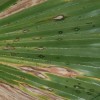 Calonectria is a fungus that affects a large number of hosts worldwide, including timber and ornamental, agricultural, and horticultural crops, causing a wide range of disease symptoms, such as cutting rot, damping-off of seedlings, leaf spot, shoot blight, and root rot. This 4-page fact sheet was written by Jiaming Yu and Monica L. Elliott, and published by the UF Department of Plant Pathology, January 2013.
Calonectria is a fungus that affects a large number of hosts worldwide, including timber and ornamental, agricultural, and horticultural crops, causing a wide range of disease symptoms, such as cutting rot, damping-off of seedlings, leaf spot, shoot blight, and root rot. This 4-page fact sheet was written by Jiaming Yu and Monica L. Elliott, and published by the UF Department of Plant Pathology, January 2013.
http://edis.ifas.ufl.edu/pp302
Field Observations During the Ninth Microwave Water and Energy Balance Experiment (MicroWEX-9): from March 24, 2010 through January 6, 2011 (AE494)
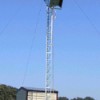 The goal of MicroWEX-9 was to conduct a season-long experiment that incorporated passive microwave observations as well as Light Detection and Ranging (LiDAR) observations for a growing season of elephant grass. The variety of sensors would allow for further understanding of the land-atmosphere interactions during the growing season, and their effect on observed passive microwave signatures at 6.7 GHz and 1.4 GHz, as well as LiDAR scans. This 72-page fact sheet was written by Tara Bongiovanni, Pang-Wei Liu, Karthik Nagarajan, Robert Terwilleger, Alejandro Monsivais-Huertero, Jasmeet Judge, Juan Fernandez-Diaz, Daniel Preston, Tyler Cheney, Jason Motsinger, and published by the UF Department of Agricultural and Biological Engineering, January 2013.
The goal of MicroWEX-9 was to conduct a season-long experiment that incorporated passive microwave observations as well as Light Detection and Ranging (LiDAR) observations for a growing season of elephant grass. The variety of sensors would allow for further understanding of the land-atmosphere interactions during the growing season, and their effect on observed passive microwave signatures at 6.7 GHz and 1.4 GHz, as well as LiDAR scans. This 72-page fact sheet was written by Tara Bongiovanni, Pang-Wei Liu, Karthik Nagarajan, Robert Terwilleger, Alejandro Monsivais-Huertero, Jasmeet Judge, Juan Fernandez-Diaz, Daniel Preston, Tyler Cheney, Jason Motsinger, and published by the UF Department of Agricultural and Biological Engineering, January 2013.
http://edis.ifas.ufl.edu/ae494
Diagnosing Herbicide Injury in Corn (SSAGR365/AG374)
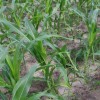 This 9-page fact sheet lists nine modes of action: the mechanism of action, behavior in plants, symptoms and herbicides, and illustrations. Written by Sarah Berger, Jason Ferrell, and Peter Dittmar, and published by the UF Department of Agronomy, January 2013.
This 9-page fact sheet lists nine modes of action: the mechanism of action, behavior in plants, symptoms and herbicides, and illustrations. Written by Sarah Berger, Jason Ferrell, and Peter Dittmar, and published by the UF Department of Agronomy, January 2013.
http://edis.ifas.ufl.edu/ag374
Beyond 'Earlygold': Juice Color and Quality of Additional Early-Maturing Sweet Orange Selections (HS1209)
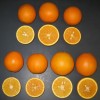 This publication summarizes 5 years of juice quality information about 15 early-maturing sweet orange selections introduced to Florida and evaluated after ‘Earlygold’ became available. The trees were grown at a central Florida and Indian River location for about 10 years. Also presented are observations on tree development summarized across both locations and two rootstocks. This 8-page fact sheet was written by Horticultural Sciences, and published by the UF Department of William S. Castle, January 2013.
This publication summarizes 5 years of juice quality information about 15 early-maturing sweet orange selections introduced to Florida and evaluated after ‘Earlygold’ became available. The trees were grown at a central Florida and Indian River location for about 10 years. Also presented are observations on tree development summarized across both locations and two rootstocks. This 8-page fact sheet was written by Horticultural Sciences, and published by the UF Department of William S. Castle, January 2013.
http://edis.ifas.ufl.edu/hs1209
Informacion para los propietarios: Cancro Citrico (PP298)
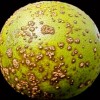 El cancro cítrico es una enfermedad introducida en Florida y es muy perjudicial económicamente para la industria comercial. La enfermedad no está presente en todas las regiones tropicales y subtropicales productoras de cítricos donde el cancro cítrico puede ser problemático, por lo tanto, las restricciones para exportar fruta con cancro cítrico son muy estrictas. Esta enfermedad también concierne a los propietarios, no solo por sus efectos en la industria económica, sino también porque es altamente contagiosa y la mayoría de la fruta contagiada en un árbol muy afectado se cae de éste prematuramente. This 4-page fact sheet was written by M. M. Dewdney, P. D. Roberts, J. H. Graham, K. R. Chung, and M. Zekri, and published by the UF Department of Plant Pathology, January 2013.
El cancro cítrico es una enfermedad introducida en Florida y es muy perjudicial económicamente para la industria comercial. La enfermedad no está presente en todas las regiones tropicales y subtropicales productoras de cítricos donde el cancro cítrico puede ser problemático, por lo tanto, las restricciones para exportar fruta con cancro cítrico son muy estrictas. Esta enfermedad también concierne a los propietarios, no solo por sus efectos en la industria económica, sino también porque es altamente contagiosa y la mayoría de la fruta contagiada en un árbol muy afectado se cae de éste prematuramente. This 4-page fact sheet was written by M. M. Dewdney, P. D. Roberts, J. H. Graham, K. R. Chung, and M. Zekri, and published by the UF Department of Plant Pathology, January 2013.
http://edis.ifas.ufl.edu/pp298
Amaryllis Lesion Nematode, Pratylenchus hippeastri Inserra et al., 2006 (Nematoda: Tylenchida: Pratylenchidae) (EENY546/IN975)
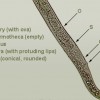 Amaryllis lesion nematode is an important nematode pest of amaryllis in Florida. It reduces plant vigor, flower yield, and bulb size. As the nematodes tunnel through the root, the damaged cells die and collapse, forming lesions on the exterior and the interior of the root tissue. This 4-page fact sheet was written by William T. Crow, and published by the UF Department of Entomology and Nematology, January 2013.
Amaryllis lesion nematode is an important nematode pest of amaryllis in Florida. It reduces plant vigor, flower yield, and bulb size. As the nematodes tunnel through the root, the damaged cells die and collapse, forming lesions on the exterior and the interior of the root tissue. This 4-page fact sheet was written by William T. Crow, and published by the UF Department of Entomology and Nematology, January 2013.
http://edis.ifas.ufl.edu/in975
Causes and Management of Insect and Mite Resistance in Strawberry Production (ENY841/IN713)
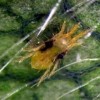 Episodes of pest resistance to popular pesticides can cause yield losses, reduction of fruit quality, added control costs, environmental degradation, and emotional stress among farmers. These consequences can be alleviated if resistance management is practiced throughout the strawberry industry. If they minimize pesticide application by depending more on biological and cultural pest control measures, and take care not to expose pest populations to pesticides with identical modes of action, growers can avoid causing pesticide resistance. This 8-page fact sheet was written by James F. Price and Curtis Nagle, and published by the UF Department of Entomology and Nematology, November 2012.
Episodes of pest resistance to popular pesticides can cause yield losses, reduction of fruit quality, added control costs, environmental degradation, and emotional stress among farmers. These consequences can be alleviated if resistance management is practiced throughout the strawberry industry. If they minimize pesticide application by depending more on biological and cultural pest control measures, and take care not to expose pest populations to pesticides with identical modes of action, growers can avoid causing pesticide resistance. This 8-page fact sheet was written by James F. Price and Curtis Nagle, and published by the UF Department of Entomology and Nematology, November 2012.
http://edis.ifas.ufl.edu/in713
Biology and Control of Sorghum-almum in Sugarcane (SSAGR369/SC098)
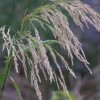 Sorghum-almum is a weak, perennial rhizomatous grass. Leaves of seedlings are rolled in a bud with a fringed membranous ligule. Seedlings often resemble corn seedlings when small. Stems of mature plants are stout and erect, reaching up to 14 feet tall. Leaf blades are flat and sandpapery. Sorghum-almum is commonly found in the southern part of Florida in sugarcane fields and along ditches, canals, and roadsides. This 3-page fact sheet was written by Dennis Calvin Odero, Ron Rice, and Les Baucum , and published by the UF Department of Agronomy, January 2013.
Sorghum-almum is a weak, perennial rhizomatous grass. Leaves of seedlings are rolled in a bud with a fringed membranous ligule. Seedlings often resemble corn seedlings when small. Stems of mature plants are stout and erect, reaching up to 14 feet tall. Leaf blades are flat and sandpapery. Sorghum-almum is commonly found in the southern part of Florida in sugarcane fields and along ditches, canals, and roadsides. This 3-page fact sheet was written by Dennis Calvin Odero, Ron Rice, and Les Baucum , and published by the UF Department of Agronomy, January 2013.
http://edis.ifas.ufl.edu/sc098
Biology and Control of Horse Purslane and Common Purslane in Sugarcane (SSAGR368/SC097)
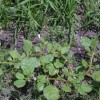 Horse purslane and common purslane are broadleaf weeds associated with sugarcane fields in muck (organic) and mineral soils of South Florida. Growers often confuse these two weed species with each other. However, these two species have distinct phylogenetic (evolutionary) and morphological differences. This 4-page fact sheet was written by Dennis Calvin Odero, Ron Rice, and Les Baucum, and published by the UF Department of Agronomy, January 2013.
Horse purslane and common purslane are broadleaf weeds associated with sugarcane fields in muck (organic) and mineral soils of South Florida. Growers often confuse these two weed species with each other. However, these two species have distinct phylogenetic (evolutionary) and morphological differences. This 4-page fact sheet was written by Dennis Calvin Odero, Ron Rice, and Les Baucum, and published by the UF Department of Agronomy, January 2013.
http://edis.ifas.ufl.edu/sc097